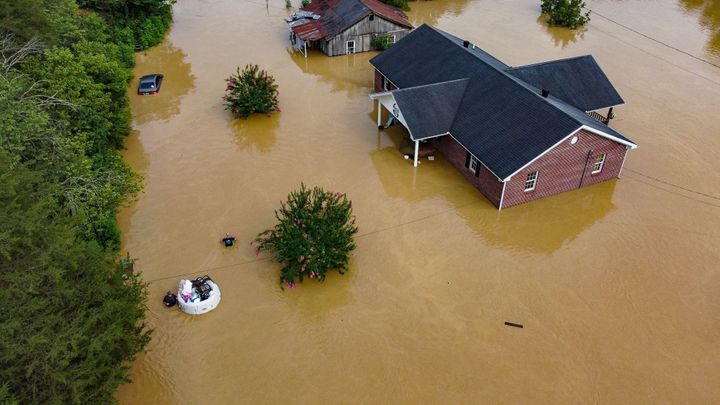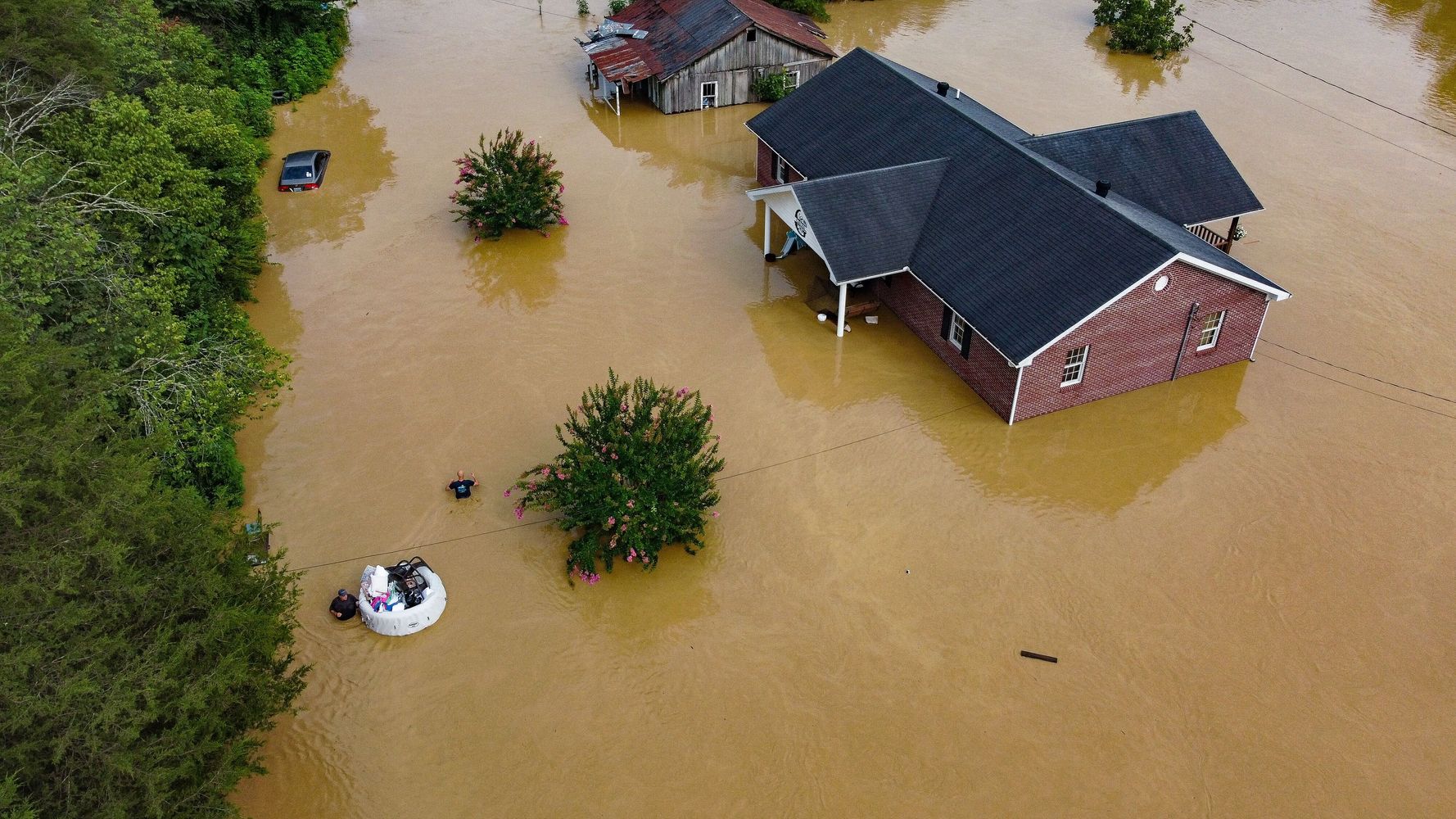Some of the worst flooding in Kentucky history has killed at least eight people so far, officials said Thursday, and the death toll is expected to keep rising.
“In a word, this event is devastating,” Gov. Andy Beshear (D) said at a news conference addressing the floods in the eastern half of the state. “And I do believe it will end up being one of the most significant deadly floods that we have had in Kentucky in at least a very long time.”
One of the deaths was that of an 81-year-old woman in Perry County, Beshear said.
“Unfortunately, I expect double-digit deaths in this flooding,” Beshear said. “That’s something that we rarely see.”

LEANDRO LOZADA via Getty Images
The floods follow torrential thunderstorms that dumped several inches of rain across eastern Kentucky ― as well as in western Virginia and southern West Virginia ― over a matter of days. It’s possible the region will see more rain Thursday night and highly likely more wiIl fall on Friday.
“This isn’t just a disaster. It is an ongoing natural disaster. We’re in the midst of it,” Beshear warned.
More than 25,000 people have lost power in affected Kentucky counties, and it may take time for workers to safely restore utilities, he said.
Kentucky National Guard Maj. Gen. Hal Lamberton said at Beshear’s news conference that his crews are out in helicopters rescuing people stranded on rooftops. “[What] we’re striving to do is get ahead of this” by gathering as many rescue resources as possible, he said, calling it a “rapidly changing situation.”
Photos of the Buckhorn School, a kindergarten-12th grade school in Perry County, showed flooded hallways filled with debris piled several feet high. Students were scheduled to return to school in two weeks.
Beshear pleaded with people to exercise caution and stay off flooded roads.
“Never drive into a road covered by flowing water. One foot of flowing water can sweep a car off the road. Two? An SUV or pickup,” he said. “Six inches of water can knock you off your feet. So don’t do it. Don’t drown. Respect barricades and posted signage. If you encounter a flooded road, turn around.”
Some of the hardest-hit communities are among the poorest in Kentucky. The three Kentucky counties with the lowest median household income ― Owsley, Breathitt and Clay ― all declared local states of emergency because of the floods. Several of the counties affected this week were also inundated with floods in 2020 that caused more than $72 million in damage.

Ryan C. Hermens/Lexington Herald Leader via Associated Press
“I wish I could tell you why we keep getting hit here in Kentucky,” Beshear said. “I wish I could tell you why areas where people may not have that much continue to get hit and lose everything.”
Kentucky and the greater Southeast are not immune to the effect that rising global temperatures have on the frequency and severity of extreme weather events, especially when it comes to rainfall. The Environmental Protection Agency warned in a 2016 report that since 1958 the amount of precipitation during heavy rainstorms has increased by 27% in the Southeast, and forecasts show that troubling trend continuing.
Flooding is the most frequent and costly disaster in Kentucky, the state says. It has one of the highest flood risks in the U.S. because of its topography and roads that pass through and over the state’s many creeks and waterways.
While the flooding claimed lives Thursday, Senate Minority Leader Mitch McConnell, a Kentucky Republican, called Democrats’ spending bill ― which allocates $370 billion in part to address climate change ― “an absolute monstrosity.”
“We’re going to be really aggressively in opposition,” the Senate leader vowed.
























































